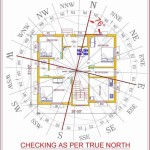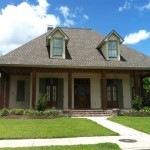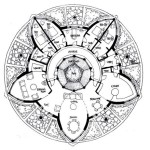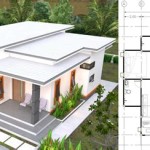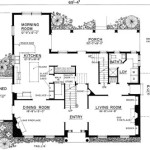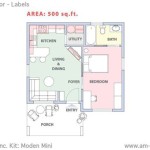Unveiling the Architectural Nuances of 18th Century Colonial House Plans
The 18th century marked a pivotal era in American architectural history, characterized by the emergence and refinement of Colonial house plans. These dwellings showcased a unique blend of functionalism and style, reflecting the social, cultural, and economic conditions of the time.
Characteristic Features of Colonial House Plans
Colonial house plans exhibited a number of distinctive features that set them apart from other architectural styles.
- Central Chimney: Most Colonial houses featured a central chimney, which served as a focal point and a means of providing heat to the rooms.
- Steeply Pitched Roofs: The roofs of Colonial houses were typically steep and pitched, with dormers or gables to provide additional headroom.
- Symmetrical Facades: Colonial houses often presented symmetrical facades, with windows and doors arranged in a balanced manner.
- Simple, Rectangular Forms: The majority of Colonial houses had rectangular forms, with few elaborate curves or ornamentation.
Types of Colonial House Plans
There were several types of Colonial house plans that evolved over time, each with its own unique characteristics.
- Cape Cod: Cape Cod houses were one-and-a-half story houses with a steeply pitched roof and a central chimney. They were typically compact and offered efficient use of space.
- Saltbox: Saltbox houses had a distinctive asymmetrical roofline, with one side being longer and steeper than the other. They provided additional space on the upper floor.
- Gambrel: Gambrel houses featured a distinctive roofline with two slopes on each side of the house. They had a spacious attic and were often used for larger homes.
- Georgian: Georgian houses were more elaborate than other Colonial styles, with symmetrical facades, pedimented doorways, and often multiple stories.
Interior Features of Colonial Houses
The interiors of Colonial houses were typically functional and well-organized.
- Central Hearth: The central chimney often served as the focal point of the interior, with fireplaces located in the main rooms.
- Simple Rooms: Rooms were generally simple and unornamented, with exposed beams and wooden floors.
- Built-in Cupboards: Colonial houses often featured built-in cupboards and storage spaces to maximize space utilization.
- Windows for Natural Light: Windows were strategically placed to bring in natural light and provide ventilation.
Influence on American Architecture
Colonial house plans had a profound influence on the development of American architecture.
- Durability and Functionality: The practical and functional nature of Colonial designs paved the way for the evolution of durable and efficient homes in America.
- Aesthetic Appeal: The simple yet elegant designs of Colonial houses became a defining feature of American architecture, inspiring future styles.
- Architectural Legacy: Colonial house plans continue to be a source of inspiration for modern-day architects, showcasing the timeless appeal of this architectural style.

18th Century Colonial Home Designs Consultation Design Consultant House

18th Century Colonial Home Designs Consultation

Pin By Terri Carroll On Tiny Structures Colonial House Plans How To Plan Vintage

Brush Everard House Architectural Report Block 29 Building 10 Colonial Williamsburg Digital Library

Saltbox Early New England Homes

M Massachusetts Architecture 17th 18th Centuries Georgian Colonial

William E Poole Designs 18th Century House Williamsburg Colonial Plans Style
Colonial House Plans Home Design Hw 2610 17509
18th Century Houses Of Williamsburg By Marcus Whiffen For At 1stdibs 1700s House Plans

Saltbox Colonial House Floor Plans Historic American Homes Brand

